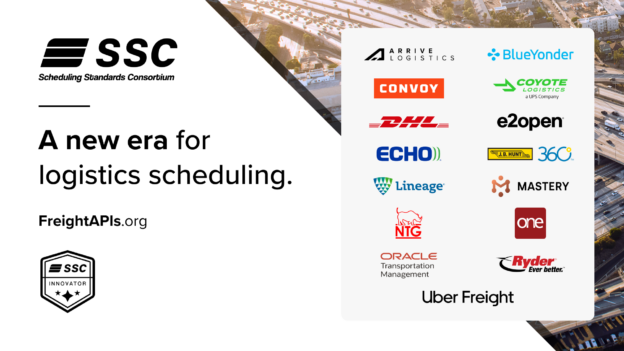COVID-19 Update: What Stimulus Means for Shippers and Carriers
Freight Research, Industry Insights • Published on April 21, 2020
The United States federal government has taken unprecedented steps to support the American economy in the face of the disruption caused by the COVID-19 pandemic. Support to individuals and households will go a long way to sustaining consumer spending, which in turn will maintain freight demand.
But policymakers have gone well beyond direct support to consumers. A handful of lending programs targeted and small- and mid-sized businesses aim to help maintain payrolls and cover recurring expenses such as rent and utilities while broad swaths of the country are on lockdown. The hope is that these programs will prevent long-term damage to the American economy and will allow a quick restart once it is safe.
We dive into fiscal stimulus policies in our latest video covering the ongoing coronavirus crisis and its impacts on freight and trucking. Ari Bixhorn, Head of Shipper Marketing, interviews Aaron Terrazas, Director of Economic Research, to learn about these lending programs and understand which programs are most relevant for businesses in the freight industry.
Subscribe to Freight Economics Updates to get the latest developments delivered directly to your inbox.
Convoy provides shippers reliable, flexible, and instant capacity when they need it most. Learn more about shipping with Convoy today.
View our economic commentary disclaimer here.

You can read the transcript of the conversation below:
Ari Bixhorn: Aaron, the government stimulus programs had been in the headlines the last couple of weeks. I wanted to ask you about the different federal spending bills that have been enacted to cushion our economy from the effects of the pandemic. Which of these programs should folks in the freight industry be aware of?
Aaron Terrazas: Well, I think there are really two sets of programs that have broad relevance to the freight industry. You can think of two buckets really. The first bucket is a set of programs aimed at supporting consumer demand and obviously if consumers are able to continue spending, that’s going to spill over to business investment, business production, and freight demand. Then a second set of programs really more targeted towards supporting businesses in the near term through this chaotic period. So if you take that first bucket, the set of programs aimed at supporting consumer demand, all of the things like unemployment insurance, like the tax cuts you just mentioned, those are really important to help consumers. I think the second set of programs is perhaps more interesting for this conversation.
There are three major loan grant programs there that I think are on a lot of people’s radar. The first two are targeted at small businesses. Those are two programs known as the Emergency Injury Disaster Loan program or EIDL, and the Paycheck Protection Program loans through both of those through the small business administration. A third program which is targeted more toward a little bit larger business, but it’s really open to anyone is called the Main Street Lending program. That’s through the Federal Reserve System.
Ari Bixhorn: Gotcha. So the Emergency Injury Loans, the Paycheck Protection Loans, and then the Main Street Loans, what are the major differences between them and how relevant are these to both carriers as well as shippers?
Aaron Terrazas: Well, I think the main differences are along three dimensions. So first the amount of funding available through the different programs, the terms of that funding, and then the administrative burden or delay involved. So let’s take each of those one by one. First, the amount of funding. The Emergency Injury Disaster loans typically have a lower funding amount for the loan part of that program. It goes up to about two million for the grant part of that program. It goes up to about $10,000 for the Paycheck Protection Program. That goes up to about $10 million. Now we are hearing that because of this massive imbalance between the funds requested and the funds that have been allocated through Congress, most applicants aren’t getting the full amount certainly through the EIDL program. There is obviously debate ongoing through this evening about to refund those programs and add more funds to them.
Aaron Terrazas: The second dimension about the terms of the different programs. The EIDL program tends to be quicker, a little bit more flexible, and a little bit higher interest rate because it’s going through existing conduits, you can access that a lot more quicker. There are fewer restrictions on what you can use the funds for, but they do carry a higher interest rate. By contrast the PPP program, there are more limits on what you could use them for. Critically, 75% of the funds needed to be used on payroll rather than rent or equipment expenses. That’s a big difference. The PPP loans have a shorter term than the EIDL loans, which can really go up to 30 year terms. The Main Street partnership is more flexible, but also more cumbersome and actually isn’t fully operational yet.
That leads to the third big difference, which is how administratively burdened some are these to access. The Emergency Injury Disaster loans have actually been used before. It’s an existing program. That is a loan program that helped a lot of small businesses after hurricane Katrina. That program administered about a billion dollars in the year after hurricane Katrina hit the Gulf Coast. It goes through existing networks and really only requires a credit check to access. So again, a lot easier to get actual funding. The PPP program does require more paperwork and as I said before, it’s actually out of funds as of today. So you have to get in the pipeline. It’s likely that more funds will be added to that program, but that there is some question mark about that. I mentioned that limitation for the PPP– about 75% has to go to payroll.
That is actually a pretty big issue for a lot of truckload carriers. Take data on how much truckload carriers spend just on their vehicle leasing costs. That is easily 30% vehicle leasing and insurance of expenses. So that is already above that threshold. That’s a big limitation for a lot of truckload carriers.
Ari Bixhorn: Aaron, you mentioned the debates that are going on in Congress. While those are still ongoing, is there anything that the freight industry businesses can do?
Aaron Terrazas: Yeah, there certainly are. As you know, I mentioned the PPP program is only available through small business administration and approved lenders. Not every lender can work with those loans. So if it’s something that you’re interested in, even before there are funds available, get in contact with your bank, with your lender. Make sure that they can administer those loans and if they can’t, find one who can. Second, these loans do require quite a bit of paperwork to access.
So it’s worth getting that paperwork prepared in advance. The reality is the last time this program opened back in late March, that timing was really bad for a lot of truckload carriers. That was the tail end of the March freight surge. So many carriers were still out in the road and didn’t have the lead time to get those applications submitted quickly, which would’ve made sure that they had access to those loans. So anything you can do to get that paperwork done, prepared in advance of the loans actually being made available will likely get you at the front of the queue.
Ari Bixhorn: Aaron, I’ve read that there have been issues with some of these programs and I know that from some of the carriers that we speak with, they’ve been having trouble getting in touch with their lenders. What have you heard about these issues?
Aaron Terrazas: I’ve heard those stories as well. That’s clearly an issue. I’ve heard some economists compare what’s happening right now to trying to build a plane while you fly it. Particularly for the New York programs like PPP. Everyone is still trying to figure these out while we’re in the middle of this massive crisis. In general, if you look back to the funding and loan programs that were put up back in 2009, this was an issue back then. There’s always going to be a little bit of a trade off between speed, getting the funds out into the economy as quickly as possible, and accessibility or efficiency making these programs as efficient, as bulletproof as you can. I think that’s always going to be a trade off out there and something that everyone is from the government side, from the lender side, and from the business side. Everyone’s trying to figure out. It’s certainly not easy.
Ari Bixhorn: All right. Well Aaron, thank you as always for your time and your analysis and everyone joining us today. Thank you for watching. We will continue to provide regular updates on coronavirus in the freight industry. Subscribe to the Convoy blog to stay informed and we will see you next time.



